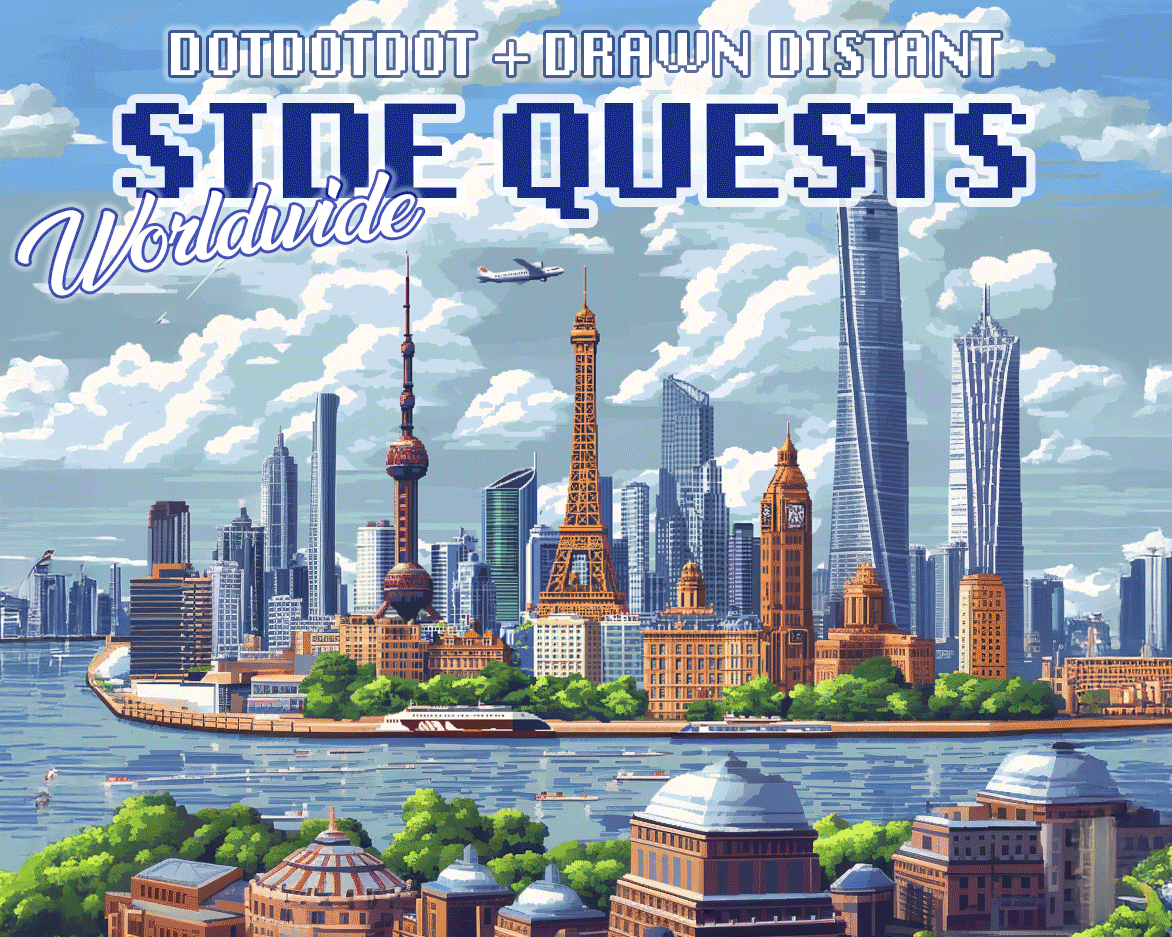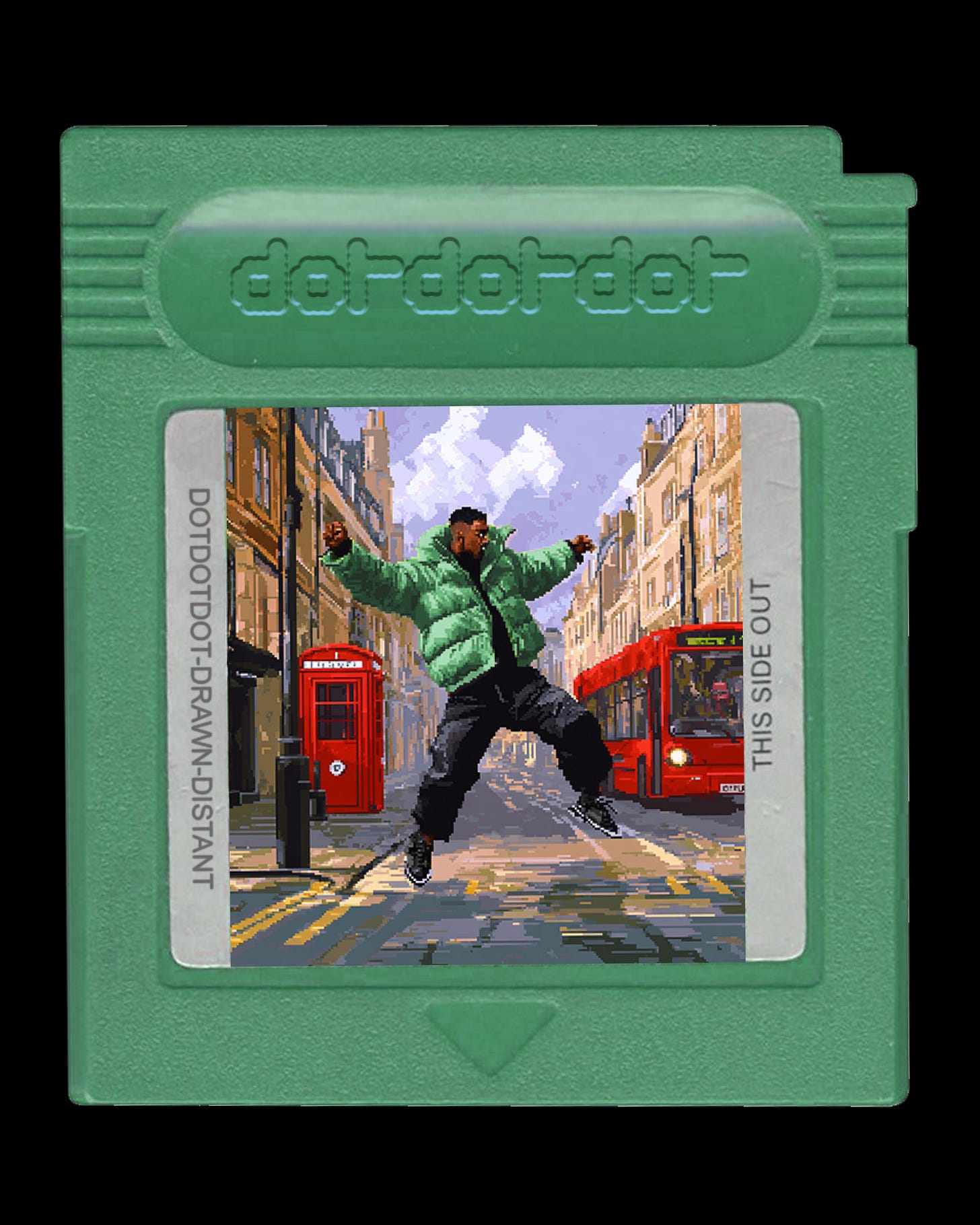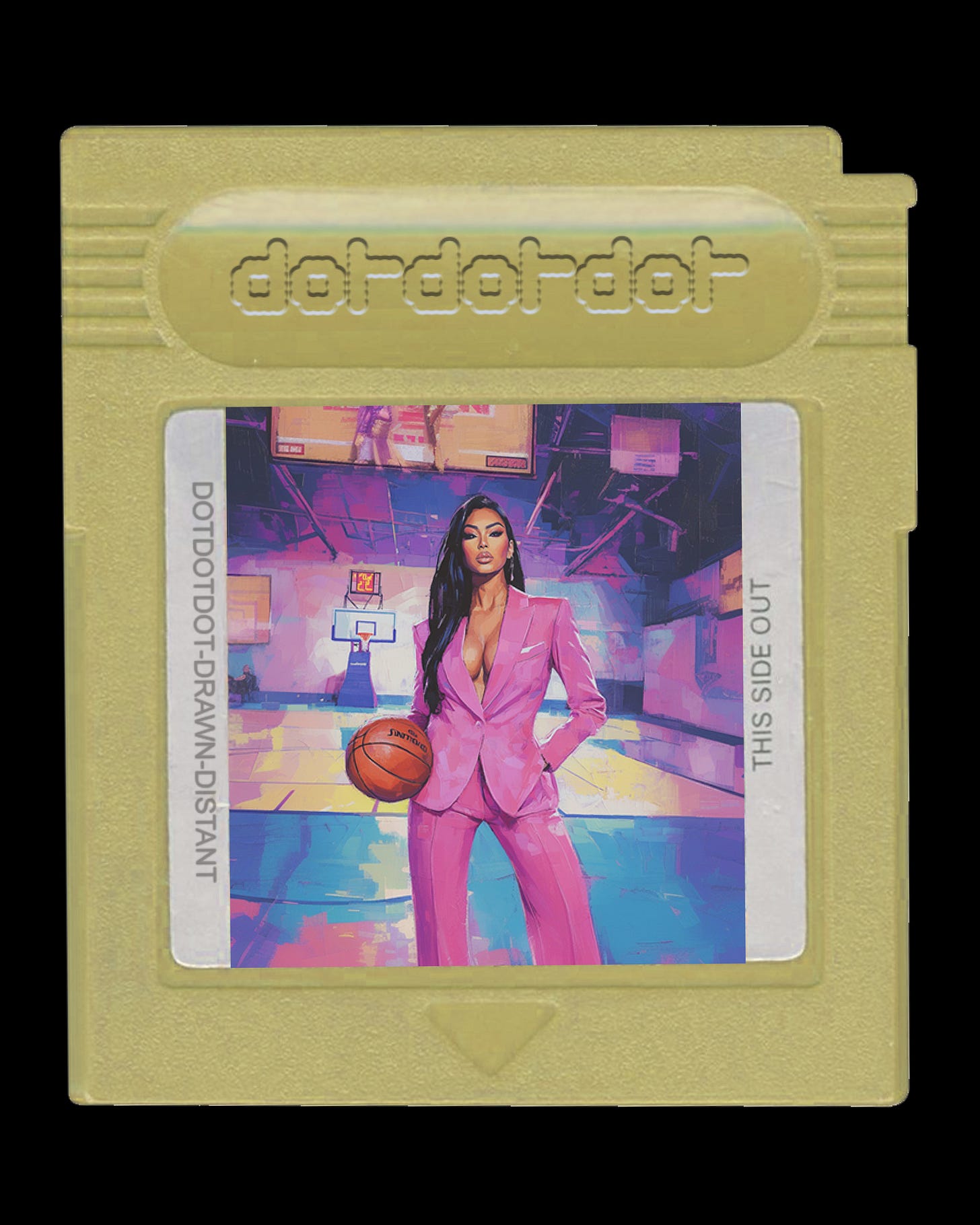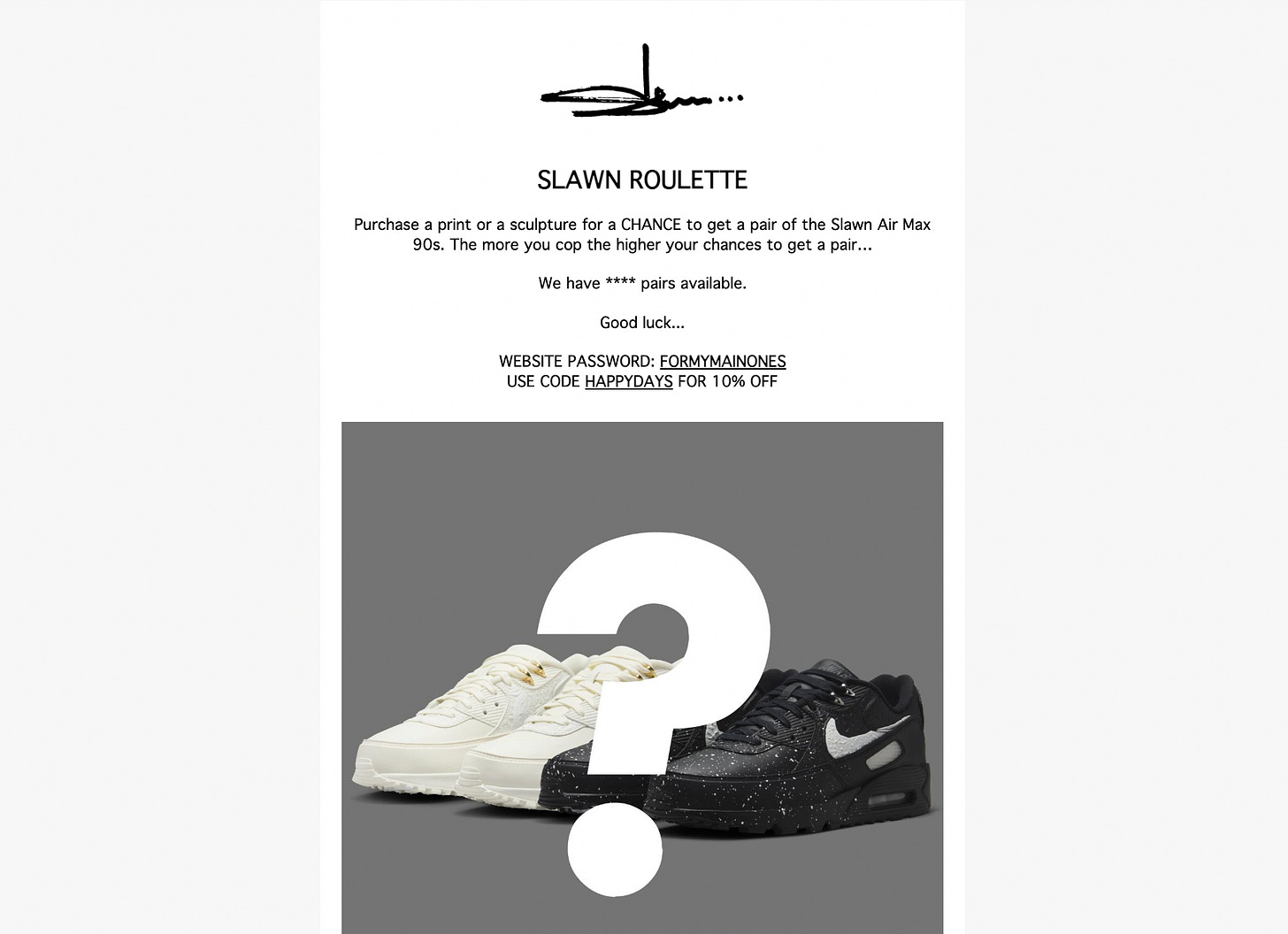Side Quests: The Secret to Community Growth
How gaming-inspired missions are the future of brand engagement.
The following article is in collaboration with Dot Dot Dot as apart of their bi-monthly ‘Pulse Check’ series.

Last week, Skepta had his fans running all over London to find something. It wasn’t for one of his street concerts with DJ AG. It wasn’t to catch a glimpse of him at the Burberry show. It was to find… tokens? Teaming up with everyone’s new favorite publisher, Outlander Magazine, the UK rapper-turned-artist hid special PUMA branded tokens around his favorite spots in London.
Those quick enough to collect them all scored an unreleased PUMA x Skepta puffer—complete with the token on the back. The catch? You had to complete the side quest to unlock it. Sound familiar?

Side quests are a core mechanic of open-world role-playing games (RPGs), extending the player’s experience beyond the main narrative. The most compelling side quests aren’t just optional tasks—they serve as storytelling devices, rewarding players with exclusive items while deepening their connection to the game’s lore.
By layering in hidden narratives, character development, and unique challenges, side quests transform the game world into something more immersive, giving players a sense of agency and discovery that goes beyond the primary questline.
Beyond the screen, #sidequest has taken over TikTok as a symbol of people embracing detours from their main path—injecting unexpected, off-script missions into their everyday lives. Snoop Dogg became an Olympic commentator. Doechii took up boxing. Even Nikola Jokić, a three-time NBA MVP, is often said to treat basketball as a side quest, with his true passion lying in a life centered around horses?
For brands, side quests offer a powerful way to expand their universe in unexpected and intriguing ways. As today’s generation of luxury consumers have grown up with video games, side quests aren’t just for kids (see Ami’s 3D miniature treasure hunt). But how does one embark on a side quest?
Build Like a Game Designer
The best games are easy to learn but challenging to master. EA Games has a special approach for this, it’s called the beach strategy. Everyone can access the beach in some way. If you’re a beginner, you might splash around in the whitewash or play on the sand. If you’re an expert, you might be surfing or scuba diving in the depths. Making side quests that range in difficulty makes for a rich variety of experiences that all can enjoy.
British streetwear brand, and Gen Z favorite, Corteiz, have honored this in the way they engage their community through side quests. Some are simple, like the Bolo Exchange, where for a limited time anyone could swap any puffer jacket for an unreleased Corteiz BOLO puffer. Thousands flocked to the exchange in London.
Some are more complex, like the 24 hour design challenge. Founder, Clint, dangled a £5000 carrot in front of anyone who wanted to try and design a 10-piece capsule collection for the brand. Hundreds gave it a crack. What this demonstrates is an understanding for the diversity of fans that follow Corteiz. Layers.
There are fans who will go the extra mile to purchase an exclusive Corteiz BOLO puffer. Then, there are designers who aspire to create a brand like Corteiz themselves, jumping at the opportunity to design a collection. Side quests can be scaled in difficulty to serve different types of fans, those who consume and those who contribute.
Create Community Touch Points
Forums are as significant to gaming culture as the games themselves. They’re hubs for discourse on strategy, narrative, and theory-crafting—spaces where narratives evolve beyond the game. Entire platforms, like Discord, have emerged from this culture of rich community exchange.
For brands designing side quests, the lesson is clear: community thrives where conversation flows. Creating the quest is just the beginning, fostering the dialogue around it is what truly brings a brand’s community-credibility to life.
Few do this better than MSCHF, the Brooklyn-based creative collective renowned for its genre-defying, viral product drops. MSCHF doesn’t just make games, it is one itself. Every initiative from the collective is built like a side quest. Take their recent Our Cow Angus project.
After buying a cow, MSCHF sold off 1204 parts to individual buyers as Angus Tokens. 1200 of these tokens will become burgers while 4 of these will become handbags. This all depends on whether the community decides to kill Angus or not. If 50 percent of token holders cancel their order, Angus will live. If not, Angus will be slaughtered.
A twisted game of morality naturally generates discussion. MSCHF have been clever in conducting that conversation on Reddit where all debate the fate of Angus. Updates of Angus on the farm are shared by MSCHF, owners give their long statements on why they are or aren’t cancelling their tokens and spectators weigh in with memes to stoke the flames.
The three way dialogue between gamekeeper, player, and spectator fosters participation that extends beyond just those who opt in, and instead enriches the entire community.
Enforce Play2Earn Not Play2Purchase
In order to form a community, you need to give them a sense of reward. Play2Earn (P2E) is a recent gaming model born from the crypto space, gaining traction during the pandemic with titles like Axie Infinity. These games reward players with cryptocurrency for completing in-game tasks, aiming to transform virtual effort into tangible value.
When transferring this logic to brand side quests, it’s easy to run into mistakes. Take .SWOOSH for example, Nike’s “home for gaming” and one of the most ambitious projects in the Web3 space. Recently, .SWOOSH engaged players in a scavenger hunt style side quest for their Air Max 1 Low Poly ‘Adventure’. Players were encouraged to “solve the clues and unlock the shoes” on Max’s Last Adventure.
Upon completing the quest, players were prompted to buy the shoes at the end—flipping the model from Play2Earn to Play2Purchase. However, side quests should never feel like just another transaction. They are, first and foremost, engagement-driven experiences designed to build energy and deepen loyalty—eventually leading to commercial success as a byproduct, not the primary goal.
The same applies to the recent Slawn x Nike side quest, Slawn Roulette. After signing up with an email, select participants received an exclusive code, giving them just a few hours to purchase a limited-edition print from UK street artist Slawn or a collaborative sculpture with Nike.
From there, an undisclosed number of buyers were granted access to purchase the coveted sneaker—another costly transaction within a short window. While this high-stakes approach feels more like gambling than gaming (hence the name Roulette), it undeniably drives conversation.
The unpredictability and exclusivity align perfectly with Slawn’s chaotic, hype-driven community, making the drop feel less like a typical sneaker release and more like an experience in itself.
Don’t Create In Silos
Remember the metaverse? While the term has been diluted, its core principles remain relevant—especially interoperability. What this means in layman's terms is that one game should flow into one another. The same applies to side quests—think beyond silos and design them as part of a larger, interconnected experience.
Initiatives in IRL should speak to initiatives in URL and vice versa. According to Roblox, 84 percent of Gen Z players say that how they style their avatar inspires how they style themselves in real life. Rihanna took note of this in her Fenty Beauty Roblox Adventure.
Players were invited to design their own versions of the Gloss Bomb Universal Lip Luminizer. They selected their preferred ingredients, effects, bottle designs, lid styles, and applicators, then named their creations and displayed them in the virtual retail space called the “Sephora Experience.”
The most popular product, voted by the community, was produced and sold at Sephora. The crossover between the physical and digital stretched the impact of this particular side quest over two worlds.
While every brand might not find their natural fit inside video games, there’s a lot to learn from their mechanics. Side quests are fundamental to any open world game worth its salt today.
By thinking more like game designers, brands can engage a generation of fans, young and old, who aren’t always looking for a means to purchase, but a means to participate.
For strategy or consultancy projects related to gaming and style, please reach out to james@drawndistant.com








